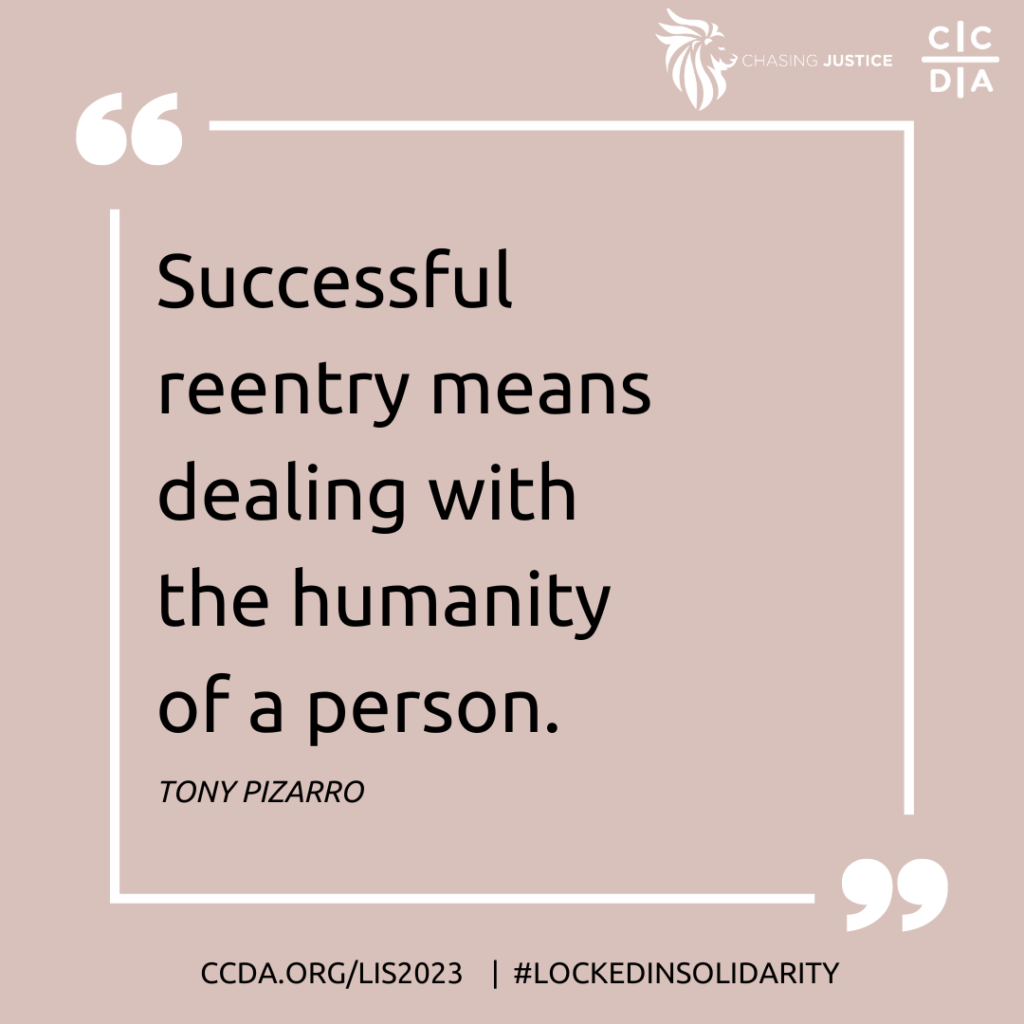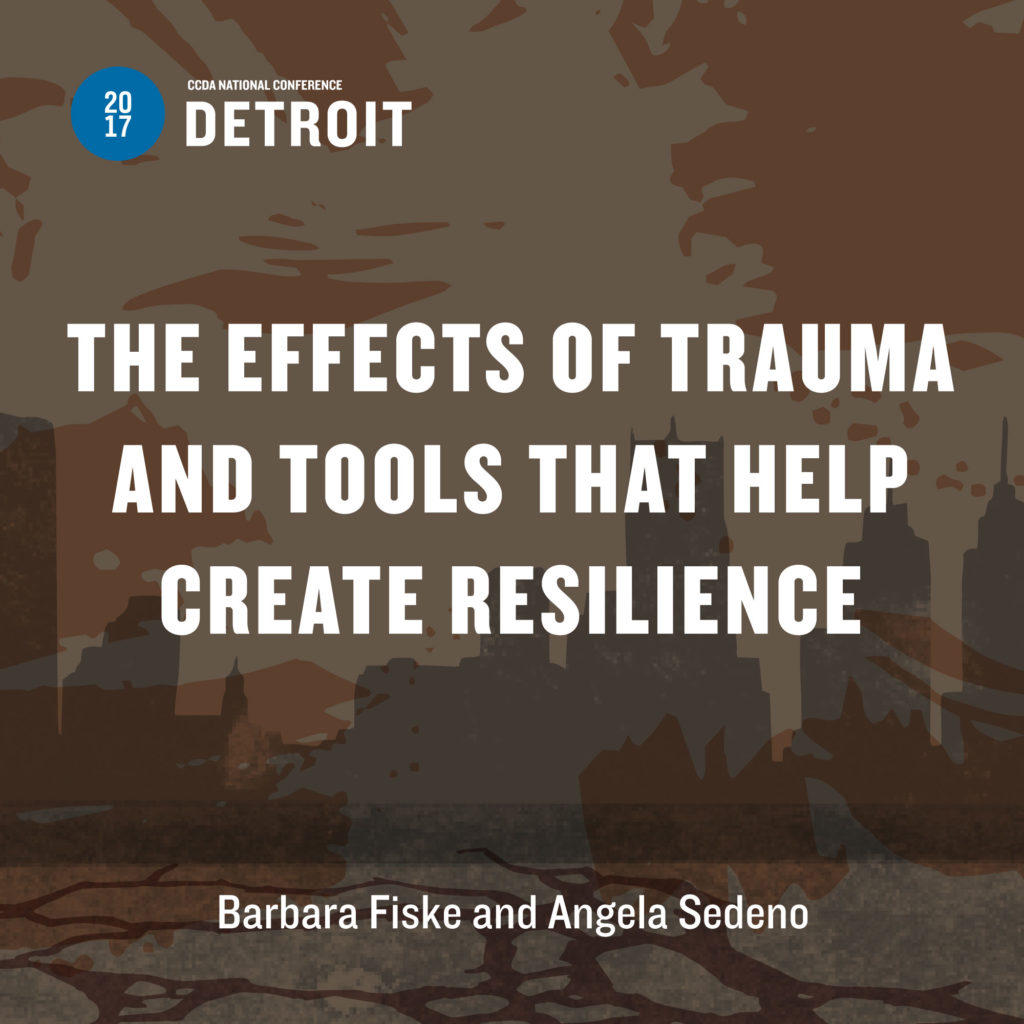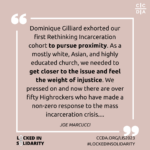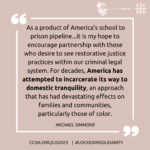by Antonio (Tony) Pizarro

What is trauma? How does trauma affect reentry? This is the question that we should be asking ourselves. We fight collectively for liberation. Yet, once liberation is achieved, there is no fight to address the traumatizing events that could hinder a successful reentry into society. Successful reentry means dealing with the humanity of a person. Trauma affects the mind as well as the body. This word trauma and its subject matter have become the new hot topic and justice issue. However, trauma is just as intangible as “Lady Justice” and more evasive. The reason trauma is intangible is because the same event can happen to multiple people, and each person may respond differently. This does not mean that a traumatic occurrence has not occurred; it just demonstrates that we cannot utilize a one-size-fits-all approach. Trauma is neither good nor bad; trauma is only a defense mechanism.
According to the Merriam-Webster dictionary, reentry is defined as “a second entry or new entry and refers to the transition of offenders from prisons or jails back into the community.” In some instances, a returning citizen may be in the process of doing the work of healing. Yet, there are some who don’t think that they have any trauma to address. Last are the returning citizens who know that trauma exists, but do not have the capability or resources to navigate this minefield. There are various traumas that a returning citizen has to deal with upon reentering society. Some of these traumas existed prior to incarceration, and some came as a result of incarceration. Then, there is the exacerbation of these traumas through incarceration. In most people’s minds, incarceration serves to deter crime and rehabilitate. In reality, prison has turned into a massive warehouse where bodies are held, and inhumane conditions exist.
Prison in any capacity is not humane. Man was not created to be caged and isolated. Imprisonment creates a new normal for those who strive to survive their conditions mentally, emotionally, and spiritually. A returning citizen has developed so many layers of trauma reentering society that are complex. Returning citizens are stigmatized, marginalized, and further traumatized because they have been categorized as other because of their behaviors. Is society weaponizing trauma? By weaponizing I mean “exploit for the purpose of attacking a person or group, or for spreading discord.” (Oxford Language Dictionary)
Dr. Joy DeGruy described “exaggerated startle response, problems in concentration, irritable or aggressive behavior, and hyper-vigilance” as symptoms of post-traumatic stress syndrome. (p.99). For someone in a carceral setting, all of these behaviors are necessary to survive. However, the brain does not distinguish changing circumstances or environments. “Trauma is the body’s proactive response to an event-or a series of events that it perceives as potentially dangerous. This perception may be accurate, inaccurate, or entirely imaginary.” (Menakem, p.7). Trauma has no concern for its impact on others, whether through perception or harm. Trauma goes through the lizard brain before it enters the prefrontal cortex. The lizard brain is the primitive part of our brain that focuses on survival. Trauma works to protect the individual.
This supports the statement that trauma is neither good nor bad. DeGruy posited that “Behaviors and beliefs may have been necessary for survival at one time, but today they undermine our ability to succeed.” (p.102). This is the reality for many returning citizens. Their behaviors and beliefs are not inherently bad or wrong; they are inappropriate for current circumstances.
One can have a traumatic response to anything perceived as a threat, not only to physical safety, but to what they do, say, think, care about, believe in, or yearn for! Perceived disrespect is an example of a traumatic response that leads to violence.
In conclusion, we have to ensure that the basic needs of individuals reentering society are met in order for them to feel safe and secure. This is in conjunction with providing support and resources to address the compounded trauma.
Read other blogs around reentry here.
Featured Resource

The Effects of Trauma and Tools That Help Create Resilience
About Antonio (Tony) Pizarro
Antonio Pizarro is the Founder of Kintsugi LLC which seeks to provide spaces of teaching and learning with the goal for everyone to bring all of who they are and see their brokenness as an asset. He is a Writing Center Assistant Director and Lecturer at North Park University in Chicago. Learn more about Tony’s story here.
Special Thanks
Thanks to Chasing Justice for co-creating this post!






